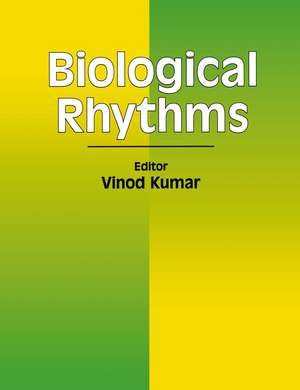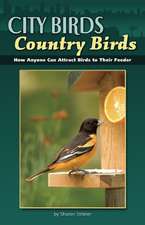Biological Rhythms
Editat de Vinod Kumaren Limba Engleză Paperback – 2 oct 2013
| Toate formatele și edițiile | Preț | Express |
|---|---|---|
| Paperback (1) | 1219.31 lei 43-57 zile | |
| Springer Berlin, Heidelberg – 2 oct 2013 | 1219.31 lei 43-57 zile | |
| Hardback (1) | 1228.15 lei 43-57 zile | |
| Springer Berlin, Heidelberg – 30 apr 2002 | 1228.15 lei 43-57 zile |
Preț: 1219.31 lei
Preț vechi: 1486.97 lei
-18% Nou
Puncte Express: 1829
Preț estimativ în valută:
233.32€ • 244.22$ • 194.19£
233.32€ • 244.22$ • 194.19£
Carte tipărită la comandă
Livrare economică 31 martie-14 aprilie
Preluare comenzi: 021 569.72.76
Specificații
ISBN-13: 9783662060872
ISBN-10: 3662060876
Pagini: 272
Ilustrații: XVI, 254 p. 47 illus., 6 illus. in color.
Dimensiuni: 189 x 246 x 14 mm
Greutate: 0.49 kg
Ediția:Softcover reprint of the original 1st ed. 2002
Editura: Springer Berlin, Heidelberg
Colecția Springer
Locul publicării:Berlin, Heidelberg, Germany
ISBN-10: 3662060876
Pagini: 272
Ilustrații: XVI, 254 p. 47 illus., 6 illus. in color.
Dimensiuni: 189 x 246 x 14 mm
Greutate: 0.49 kg
Ediția:Softcover reprint of the original 1st ed. 2002
Editura: Springer Berlin, Heidelberg
Colecția Springer
Locul publicării:Berlin, Heidelberg, Germany
Public țintă
ResearchDescriere
(Chapters 11 to 14) summarise important features of the biological clock at the level of whole animal covering all vertebrate classes (fish to mammal). Chapters 15 and 16 are on long term (seasonal) rhythms in plants and higher vertebrates. Short term rhythms (ultradian rhythms), the significance of having a clock system in animals living in extreme (arctic) environments, and the diversity of circadian responses to melatonin, the key endocrine element involved in regulation of biological rhythms, have been discussed in Chapters 17 to 19. Finally, a chapter on sensitivity to light of the photoperiodic clock is added which, using vertebrate examples, illustrates the importance of wavelength and intensity of light on circadian and non-circadian functions. A well-known expert writes each chapter. When presenting information, the text provides consistent thematic coverage and feeling for the methods of investigation. Reference citation within the body of the text adequately reflects the literature as subject is developed. A chapter begins with an abstract that enables a reader to know at the first glance the important points covered in that chapter. The chapter concludes with a full citation of references included in the text, which could be useful for further reading. The book ends with a comprehensive subject index that may be useful for quick searches.
Cuprins
1. Biological Clocks at the End of the 20th Century.- 2. Clocks, Genes and Evolution: The Evolution of Circadian Organization.- 3. Circadian Frequency and Its Variability.- 4. Period Doubling of Rhythmic Water Regulation in Plants.- 5. The Genetics and Molecular Biology of Circadian Clocks.- 6. The Circadian Systems of Cells.- 7. Retinal Circadian Rhythms.- 8. Perception of Natural Zeitgeber Signals.- 9. Photoreceptors for the Circadian Clock of the Fruitfly.- 10. Photoentrainment of Vertebrate Circadian Rhythms.- 11. Circadian Organization in Fish and Amphibians.- 12. The Circadian Organization of Reptiles.- 13. The Circadian Pacemaking System of Birds.- 14. Neurochemical Aspects of the Entrainment of the Mammalian Suprachiasmatic Circadian Pacemaker.- 15. Photoperiodism in Plants.- 16. Photoperiodism in Birds and Mammals.- 17. Ultradian Rhythms.- 18. Biological Rhythms in Arctic Animals.- 19. Diversity in the Circadian Response to Melatonin in Mammals.- 20. Light Sensitivity of the Biological Clock.
Caracteristici
This book covers the phenomenon "biological rhythm" from the molecular level, via the cellular level, up to the level of the organism







